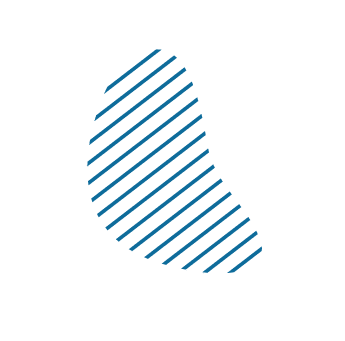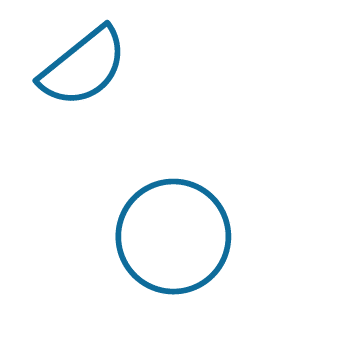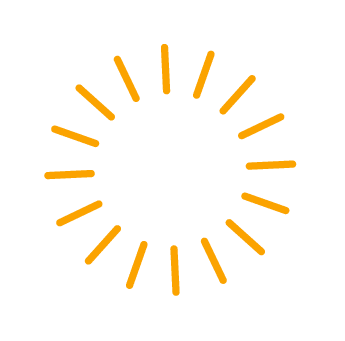The landing pages on your website should be as unique as the consumers who click on your native ads. By personalizing your landing pages and optimizing them for conversion, you can increase your sales, improve the customer experience, and achieve a greater return on your investment.
Below, we’ll explore what makes landing pages different from other parts of your website and how you can build a landing page that converts.
What is a Landing Page?
A landing page is a highly focused page on your website that people find through external sources.
Landing pages each have a specific purpose. For example, you can create a landing page for email campaigns, native ads, and keyword searches. Then, when people click on links from these locations, they arrive on a page designed around their unique intent rather than the general website homepage.
Landing pages are essential in paid advertising campaigns because they lead your prospects from the ad to an offer. This will increase your conversion rate by eliminating distractions. You can create a dedicated landing page for each campaign and design it to be relevant to that audience’s unique needs.
Landing Page vs. Home Page
A landing page is a final destination, while your homepage is the doorway to multiple destinations. The difference between the two is similar to walking into a mall versus a boutique.
When you walk into a mall, you don’t step immediately into a store. Instead, you enter the main building, which contains several shops and vendors. You can then use the map on the mall’s main floor to explore different stores and find what you need, or you can simply browse around.
Similarly, when you enter a website’s homepage, you can use the navigation bar to jump to what you’re looking for, or you can browse the site to see what they offer. You can take multiple actions or go several places throughout the website from the homepage.
A landing page, on the other hand, is like a boutique. It’s narrowly focused on a targeted product, action, and customer. A landing page might target a sub-group of your audience with a special offer exclusive to that group’s needs.
10 Strategies for Creating High-Converting Landing Pages
Use these ten strategies to optimize your landing pages and increase your conversions from your native advertising content.
1. Create a Clear Call to Action
Your call to action encourages your audience to respond to the offer on your landing page. It is critical that each landing page only has one target action. Centering your entire page around a single action increases your conversion rate by reducing distractions.
If you offer too many options, your audience might get distracted and not take any action. When you add competing offers, you can decrease your conversion rate by 1.5%.
For example, your call to action might be signing up for a free trial. To encourage this action, your page might discuss the benefits of your software, which will pique your audience’s interest. The sign-up for the trial should then be easy to access and complete directly from that page.
Even though your landing page should have a targeted action, you can include a smaller secondary action at the end of the page. This action shouldn’t be above the fold, where it competes for your reader’s attention. Keeping it at the bottom of the page can help capture any prospects who read all your content without stopping to act.
By providing a less intimidating alternative to the main action, you don’t have to lose the lead entirely if they aren’t ready to exchange their information.
2. Address Each Stage of the Funnel
The sales funnel moves your audience through three primary stages: awareness, evaluation, and purchase. Depending on your ad’s purpose, you should create landing pages for each of these stages.
If you asked someone in the awareness stage to sign up for a free trial, you would get a very low response. They might not even know they have a need, so they wouldn’t be willing to exchange personal information in exchange for your product.
Understanding your audience’s stage in the sales funnel will guide your landing page’s target action. Here are some examples of what you might offer for each stage:
- Top of the Funnel: Increasing awareness through whitepapers, eBooks, checklists, and webinars
- Middle of the Funnel: Lead generation actions like downloading eBooks, whitepapers, videos, webinars, and infographics
- Bottom of the Funnel: Converting customers with free trials, live demos, consultations, estimates, and special deals
3. Remove Distractions
To keep your audience on your landing page, remove anything that doesn’t enhance your main message. This includes sidebars, widgets, and even the top navigational bar. If your audience sees alternative options, they are more likely to navigate away from the page, which will considerably decrease your chances of converting that visitor.
Simplifying your landing page can also increase the page load time. The ideal landing page load time is between zero and four seconds. For every second after that, you will see a 4% drop in your conversion rate.
4. Personalize Each Landing Page
Each campaign deserves its own landing page. For example, you might have seen incredible results from the landing page you created for an email campaign. However, that doesn’t mean the same page is a good fit for your native advertising campaign.
Optimizing your page for each campaign’s target audience and platform will maximize its impact by ensuring that it’s always relevant to the people you want to reach.
5. Understand Your Reader’s Intent
Your landing page should answer a question or a solution to a problem. If you don’t consider the motive behind why your audience clicked on the landing page, you will miss the mark with your call to action.
For example, a consumer who reads an article on data management challenges would expect the landing page link to bring them to a page that offers a solution. If you didn’t link to a product that addresses issues raised in the source material or topics covered, you would miss the consumer’s intent. Then, that potential customer wouldn’t convert, even if the product you promoted on your landing page would have been beneficial to them.
6. Capture Your Reader’s Attention
Your headline is the first impression your landing page has on the reader. About 80% of your audience will read the headline, but only 20% will read more. Therefore, your headline should be catchy and offer something of value that will entice the consumer to continue reading. However, be careful about writing spammy titles that make lofty claims or startling statements for clicks if you can’t actually deliver on the promise.
For example, you can’t deliver on an unrealistic title that says the reader will become a millionaire by following your strategies. On the other hand, sharing a solution for generating quality leads is a promise you can fulfill, and it addresses a real concern.
Other tools you can use on your landing page to keep people’s attention include:
- Large, bold images
- Subheaders
- Colors
- Videos
7. Add Customer Testimonials
The landing page doesn’t have limitless space to convince and convert your readers. Therefore, it’s essential to make every word count.
One of the most powerful persuasive tools is social proof from other consumers. About 93.4% of consumers look at reviews when considering a new brand, and 66% of consumers are more likely to buy a product with positive reviews.
You can incorporate social proof on your landing page by adding testimonials, a list of current clients, or case studies.
8. Focus on Benefits Over Features
It’s important to list the features of your product or service, but they shouldn’t be your emphasis. Customers aren’t interested in features unless they directly apply to their situation. For example, instead of saying a car gets good gas mileage, it’s far more effective to say that you will spend 50% less on gas if you purchase this car.
One well-known example of a company that emphasizes benefits over features is Geico, with their famous slogan, “15 minutes could save you 15 percent or more on car insurance.” They aren’t telling the consumer what they offer. Instead, they’re making it clear how the consumer will benefit from their service.
9. Perform A/B Testing
A/B testing helps you optimize your landing page for your audience in order to improve your conversion rate. Instead of relying on your instincts or basing your page on what other companies are doing, you can instead design pages based on what resonates best with your audience. Testing your landing page can increase your conversion rate by 300%.
To perform A/B testing, you need to run several landing pages. These pages will be similar, but each version will have a slight change. For example, you might switch the location or color of the call-to-action button. As you run the campaign, you can see which version performs best. That page then becomes your primary landing page.
10. Prepare a Follow Up Strategy
Realistically, 80% of the leads you generate from your landing page won’t purchase from your brand. If you expect your leads to move through the sales journey on their own, you will lose out on valuable sales opportunities.
Part of creating a high-converting landing page is developing a follow-up strategy so that you can immediately respond to new leads. As people click on your call-to-action, sign up for demos, or download your digital assets, you should automate a response that begins nurturing those leads.
Nurturing your leads requires connecting with them over several touchpoints to continue moving them through the sales funnel. During the process, you address their pain points, educate them about your brand, and introduce them to your solutions.
Increase Your Native Advertising Conversion Rate
Make the most significant impact with your native advertising by investing in optimized landing pages for every campaign.
Contact us to start your next native advertising campaign.




